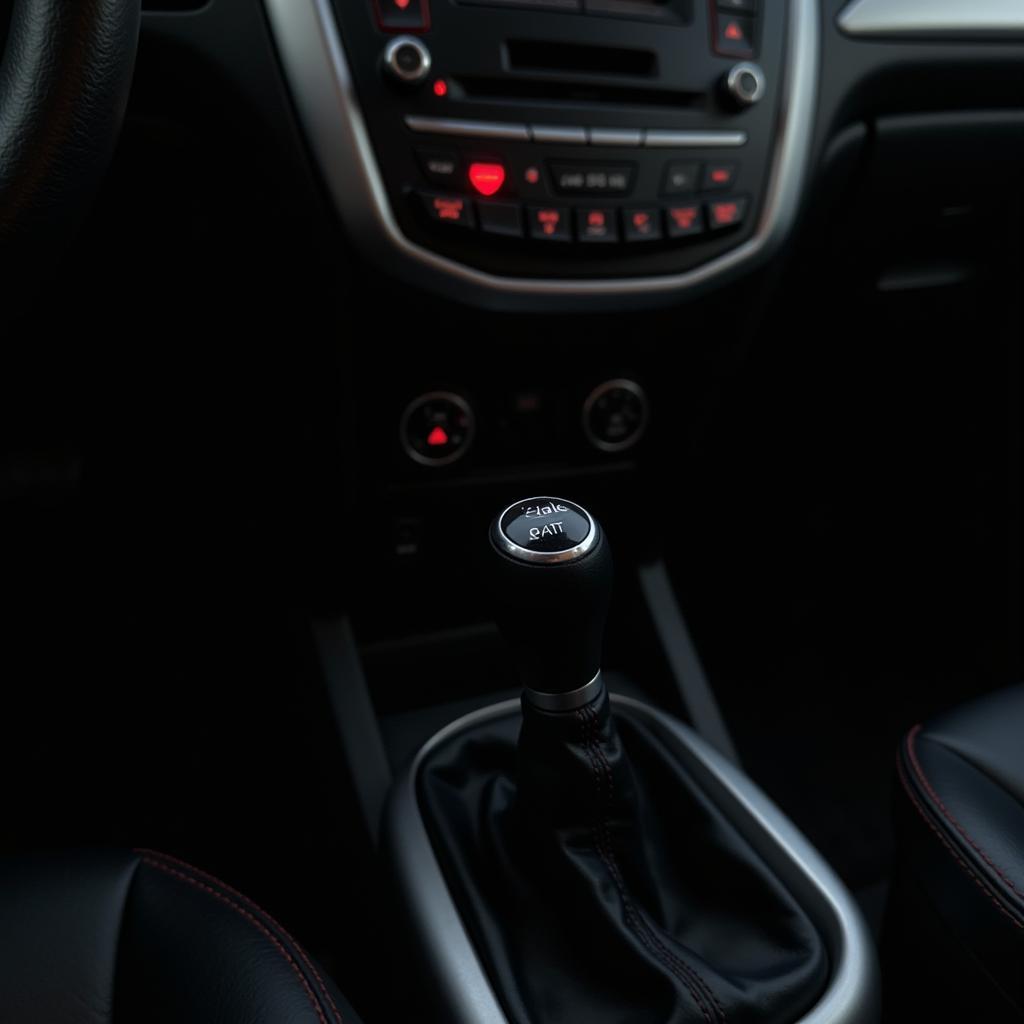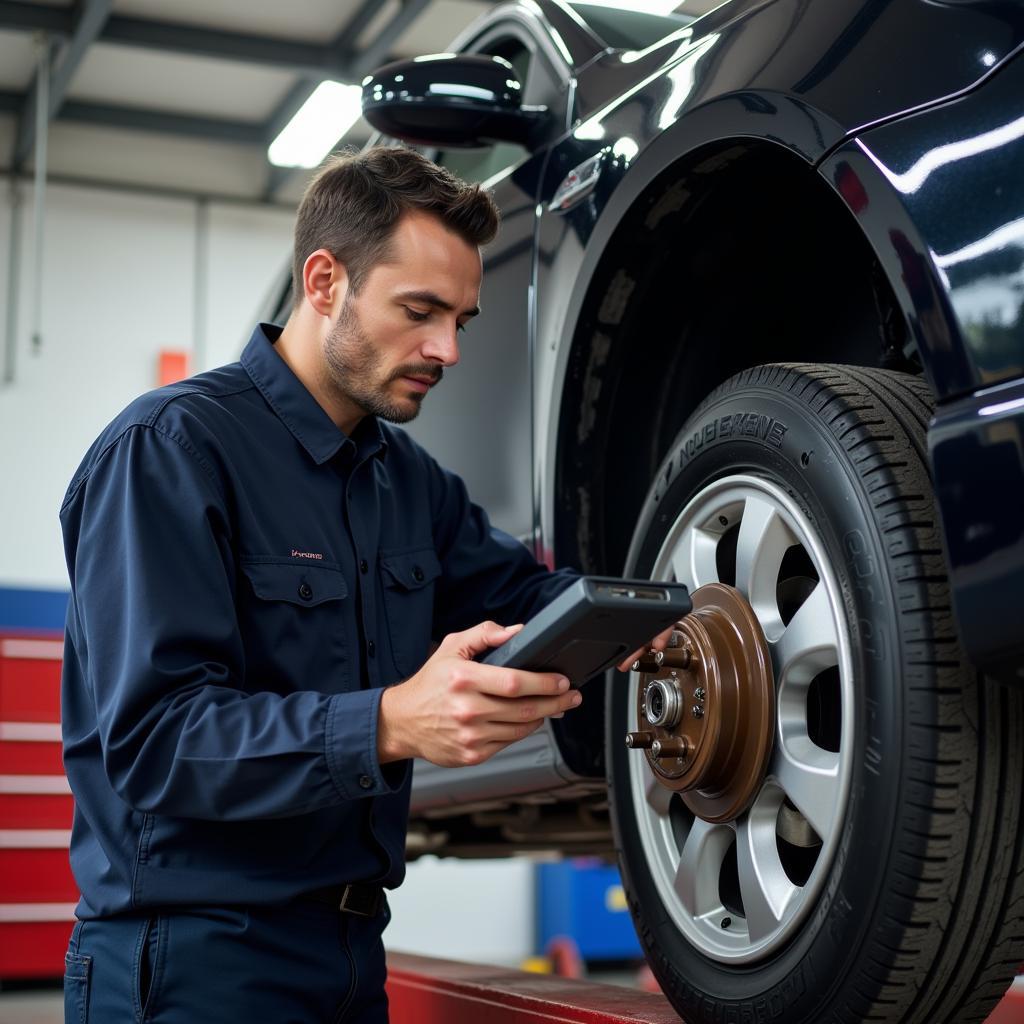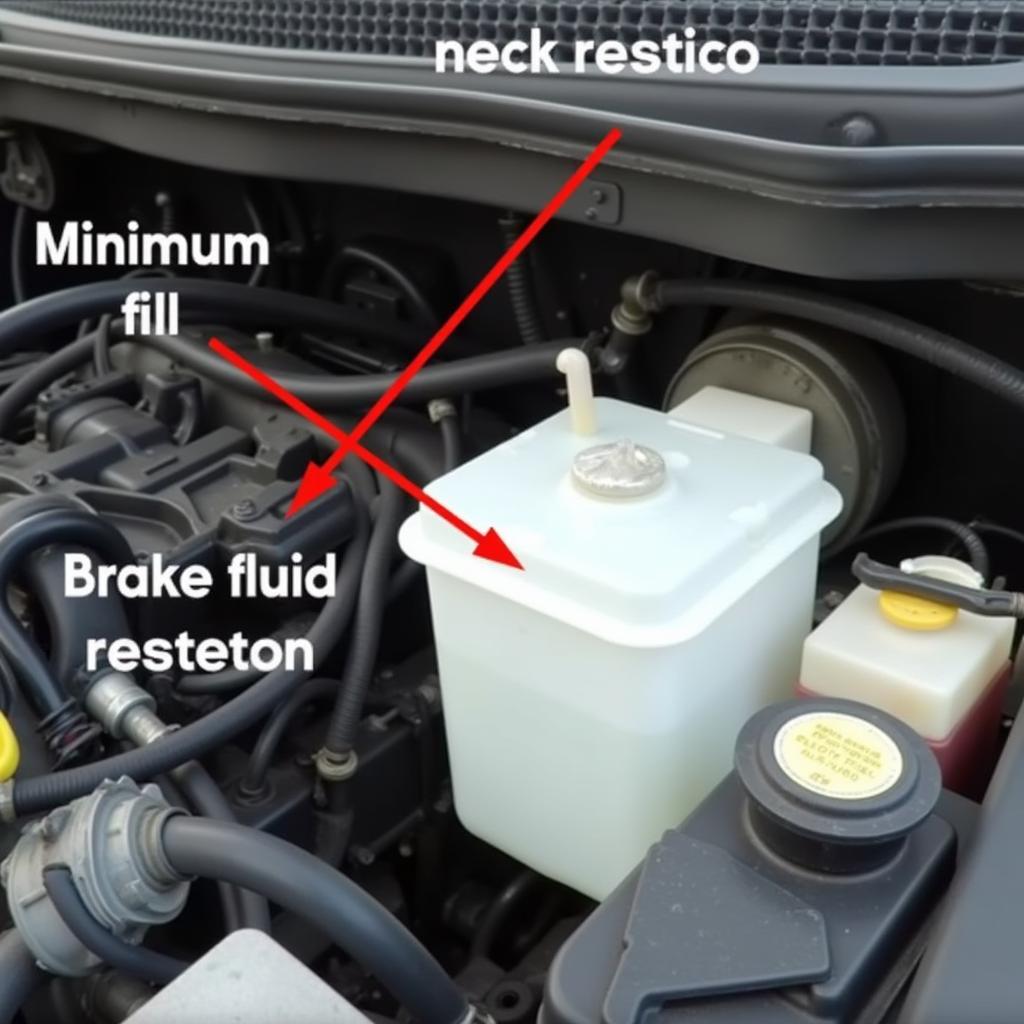The brake warning light, a universal symbol on your dashboard, can be a source of anxiety for any driver. While it may seem like a simple indicator, the brake warning light definition encompasses a range of potential issues within your vehicle’s braking system. This article aims to demystify the brake warning light, equipping you with the knowledge to understand its various meanings and take appropriate action.
Deciphering the Brake Warning Light: What’s it Trying to Tell You?
The brake warning light, typically depicted as a red circle with the word “BRAKE” or an exclamation mark within it, serves as your car’s primary means of communicating a problem within the braking system. It’s important to remember that this warning light is not the same as the parking brake warning light. While both are related to your brakes, they signal different issues. Let’s break down the possible reasons why your brake warning light might be illuminated:
1. Engaged Parking Brake: A Simple Oversight
One of the most common and easily rectified reasons for the brake warning light is an engaged parking brake. It’s easy to forget to disengage it before driving off, especially if you’re in a rush. Before panicking, make sure your parking brake is fully released. If the light goes off, you’re good to go!
 Car with engaged parking brake
Car with engaged parking brake
2. Low Brake Fluid Level: A Cause for Concern
Your car’s braking system relies on hydraulic pressure created by brake fluid to function correctly. A low brake fluid level can significantly impact your ability to brake effectively, and the warning light is a crucial indicator of this issue. If you suspect a leak in your braking system, do not drive the vehicle and seek immediate professional assistance.
3. Brake System Malfunction: From Sensors to ABS
Modern vehicles are equipped with sophisticated braking systems that often include Anti-lock Braking Systems (ABS) and Electronic Stability Control (ESC). A malfunction in any of these components, including sensors, control modules, or wiring, can trigger the brake warning light. Diagnosing and repairing these issues often requires specialized equipment and expertise.
 Mechanic inspecting car brake system
Mechanic inspecting car brake system
Brake Warning Light vs. Parking Brake Warning Light: What’s the Difference?
While both lights relate to your vehicle’s braking system, understanding their distinct meanings is crucial. As we’ve discussed, the brake warning light typically indicates a more serious issue within the hydraulic braking system, while the parking brake warning light definition is simpler – it only illuminates when the parking brake is engaged.
parking brake warning light definition
What to Do When Your Brake Warning Light Turns On
-
Don’t Panic, but Don’t Ignore It: The brake warning light is a serious signal. Pull over to a safe location as soon as possible.
-
Check Your Parking Brake: Ensure your parking brake is fully disengaged.
-
Check Your Brake Fluid: If you’re comfortable doing so, carefully check your brake fluid level. Refer to your owner’s manual for the location of the reservoir and instructions.
-
Seek Professional Help: If the light remains on or you suspect a leak or other issue, do not drive the vehicle. Contact a qualified mechanic or dealership immediately.
Brake Warning Light: Your Safety Net
Your vehicle’s brake warning light is more than just a light; it’s a crucial safety feature designed to alert you to potential problems within a system you rely on every time you drive. Understanding the brake warning light definition and responding appropriately can be the difference between a minor inconvenience and a serious accident.
Remember, regular vehicle maintenance, including brake inspections, plays a vital role in preventing brake system issues. Don’t wait for the warning light to illuminate before addressing your car’s braking system. Your safety and the safety of others on the road depend on it.

